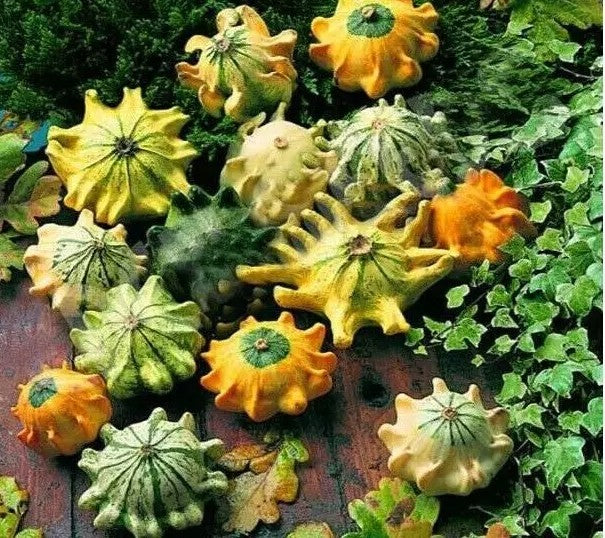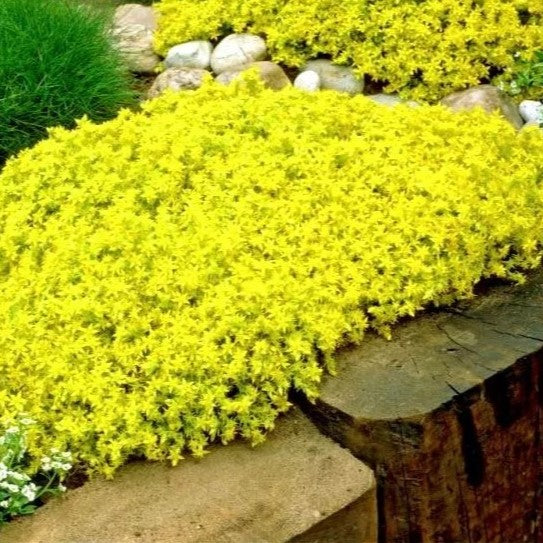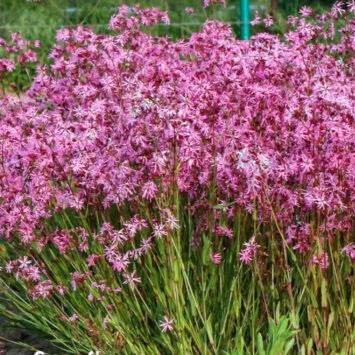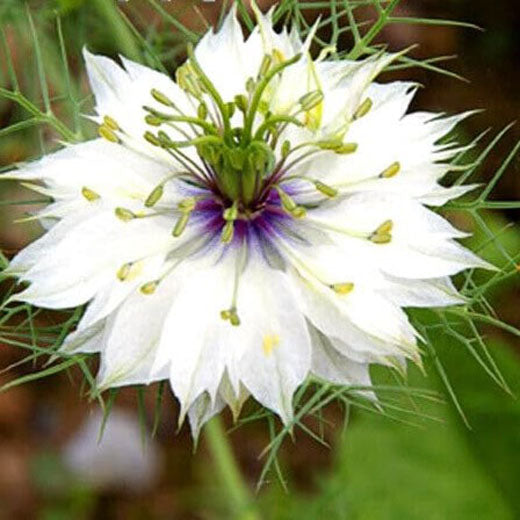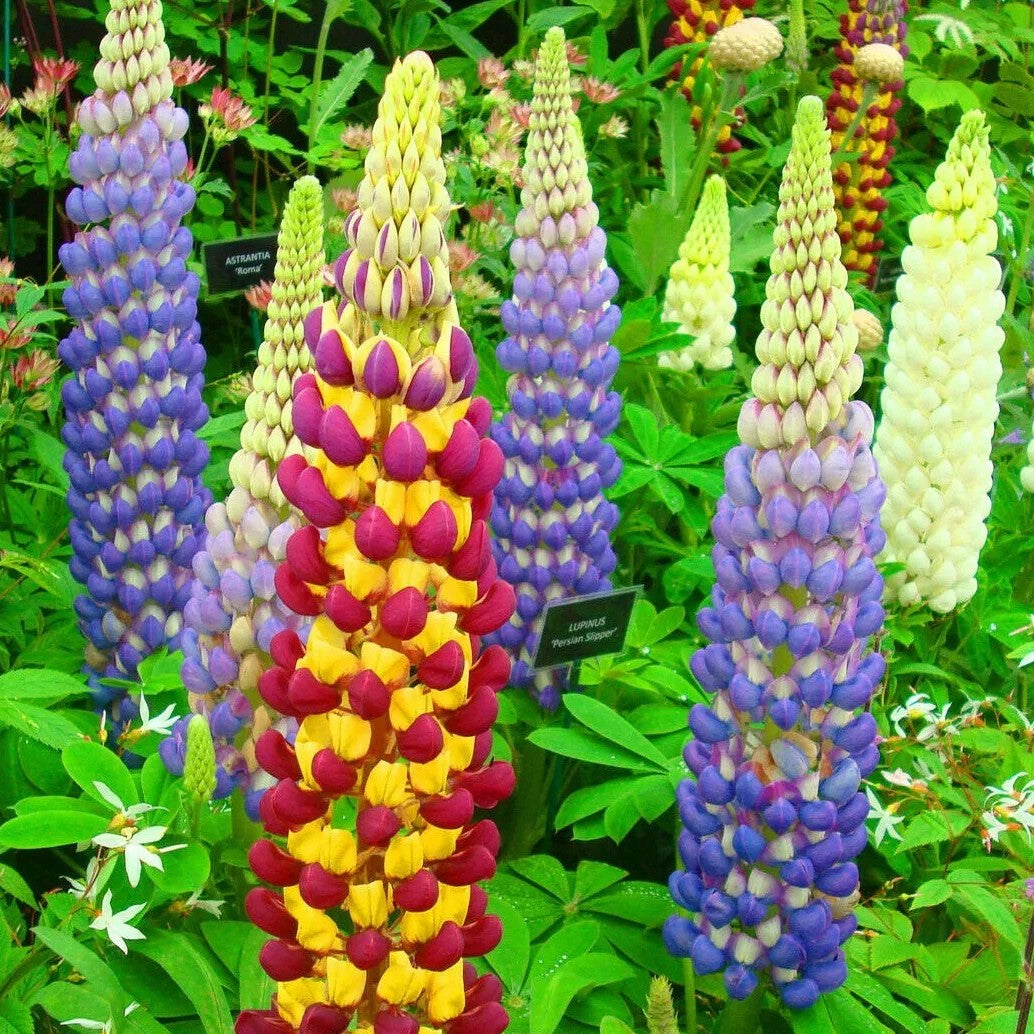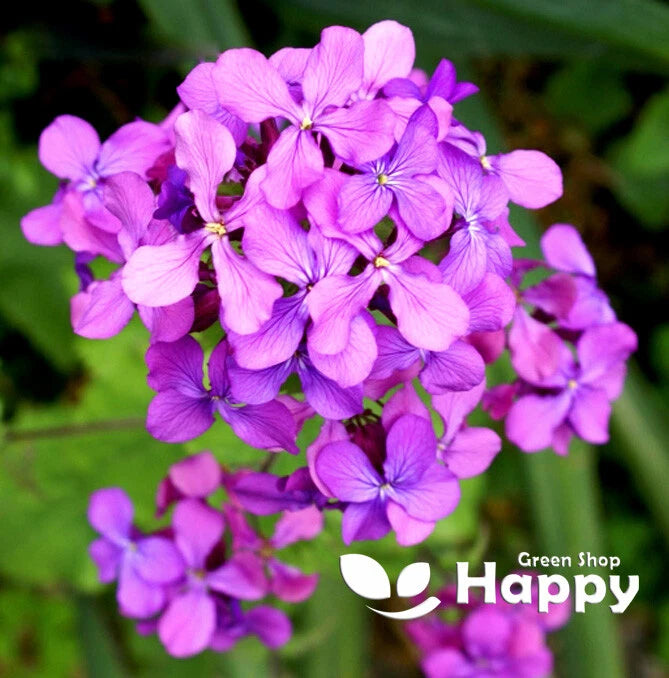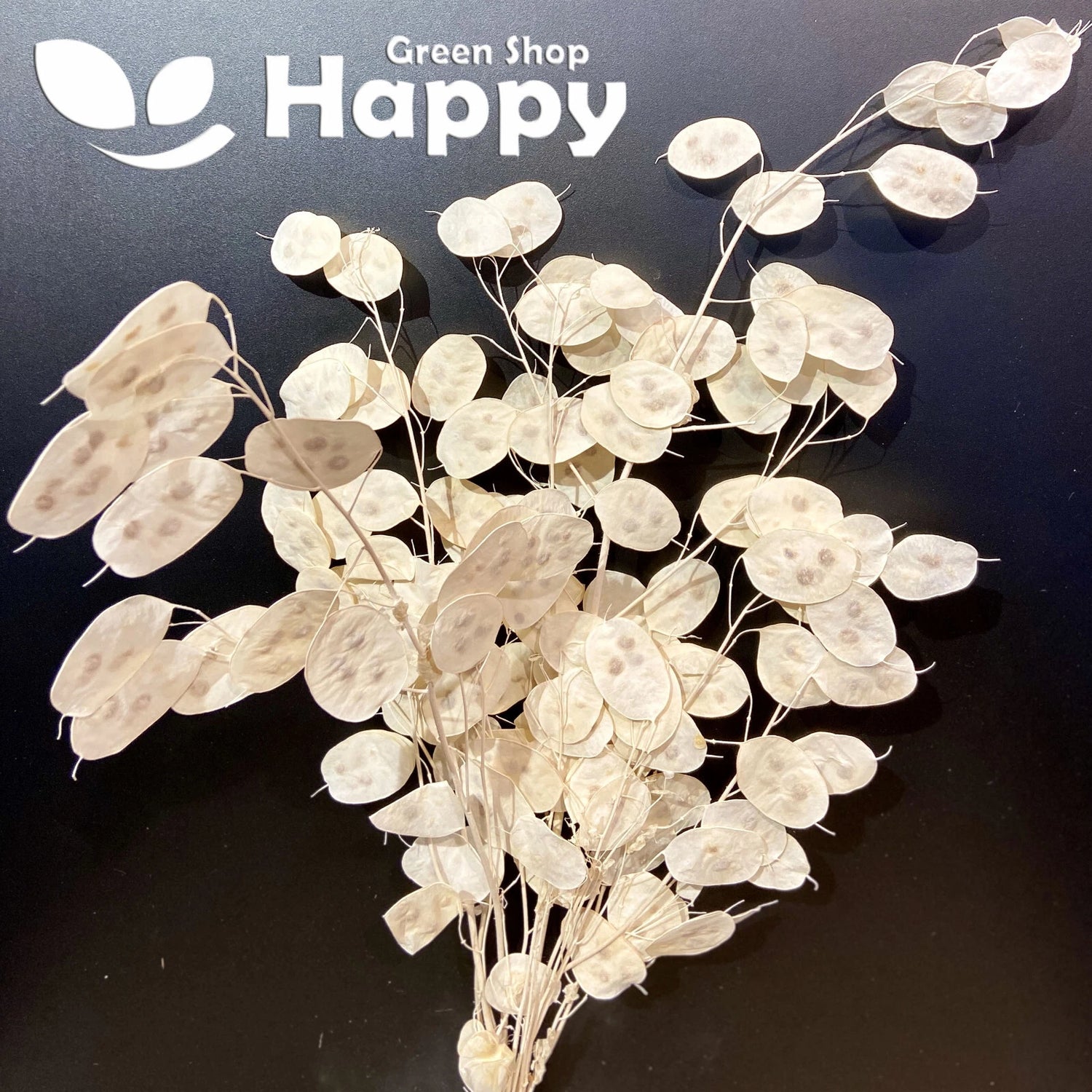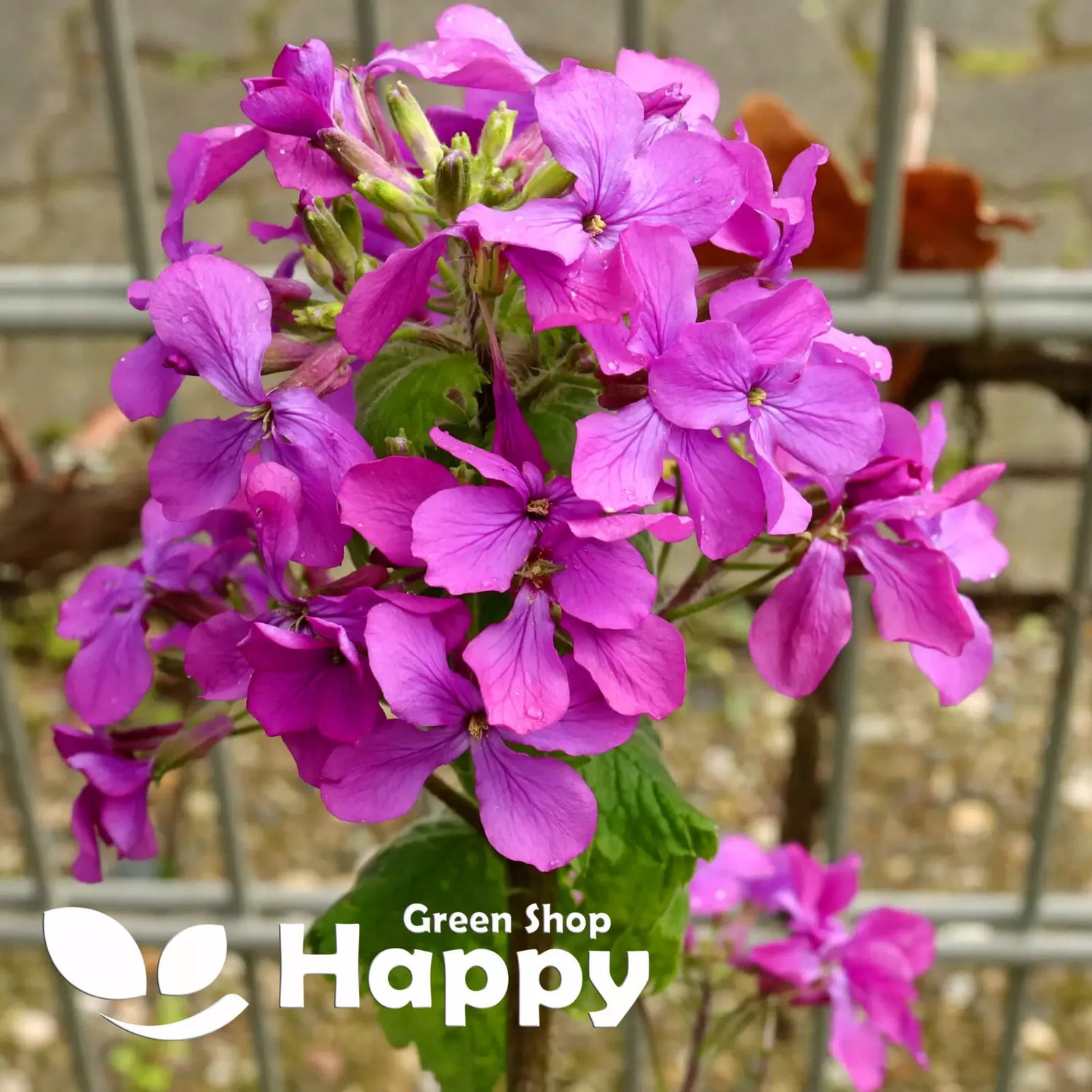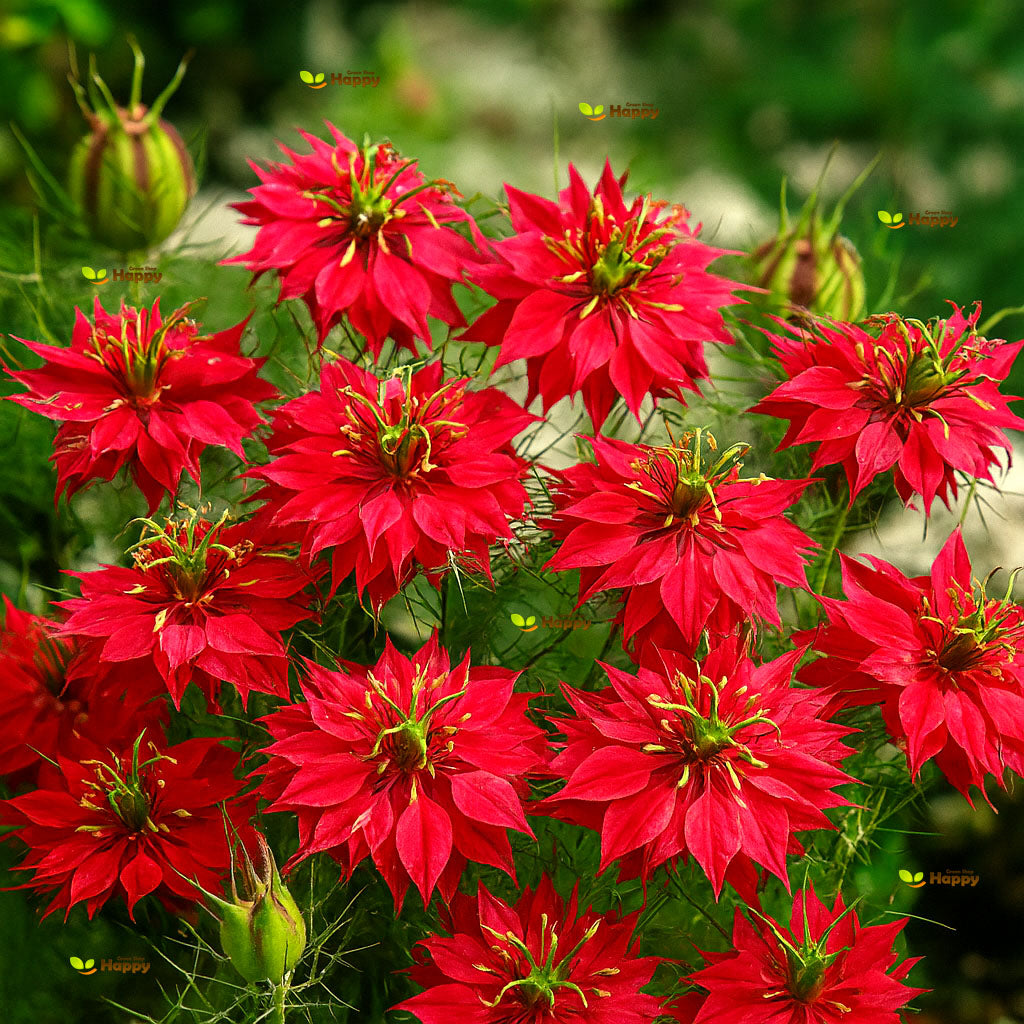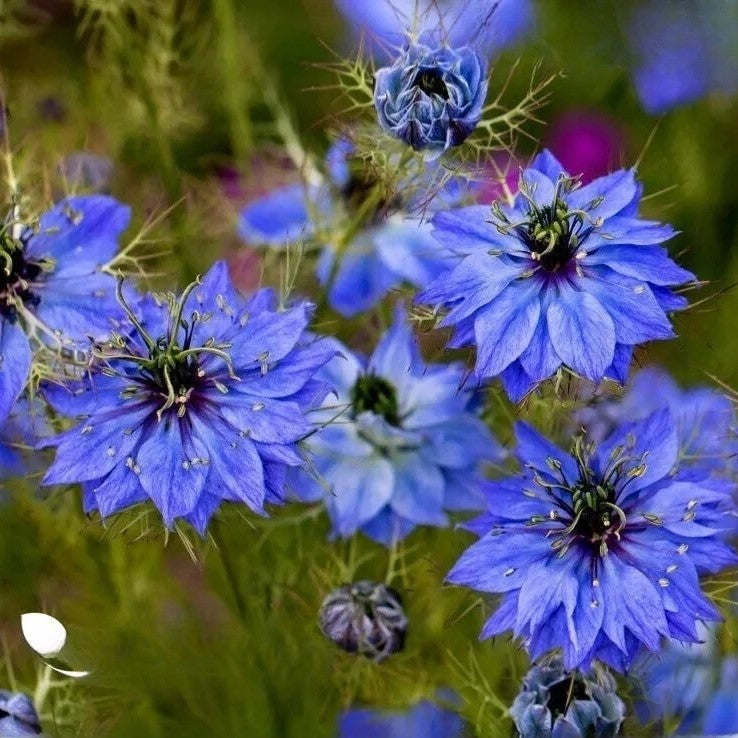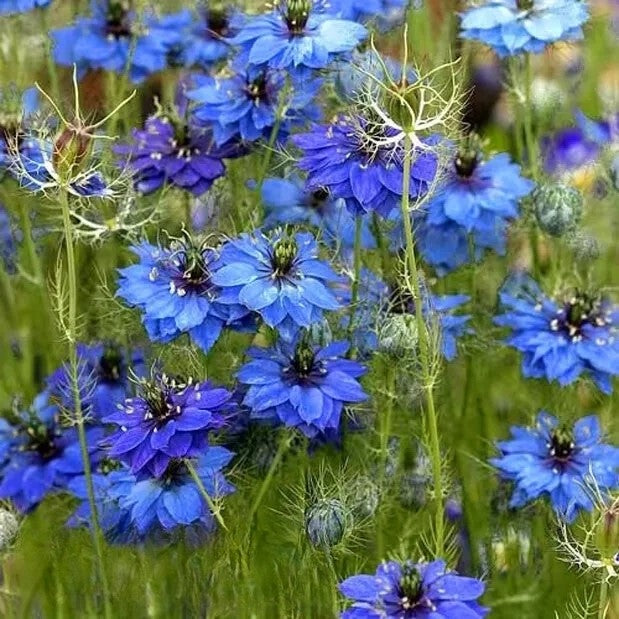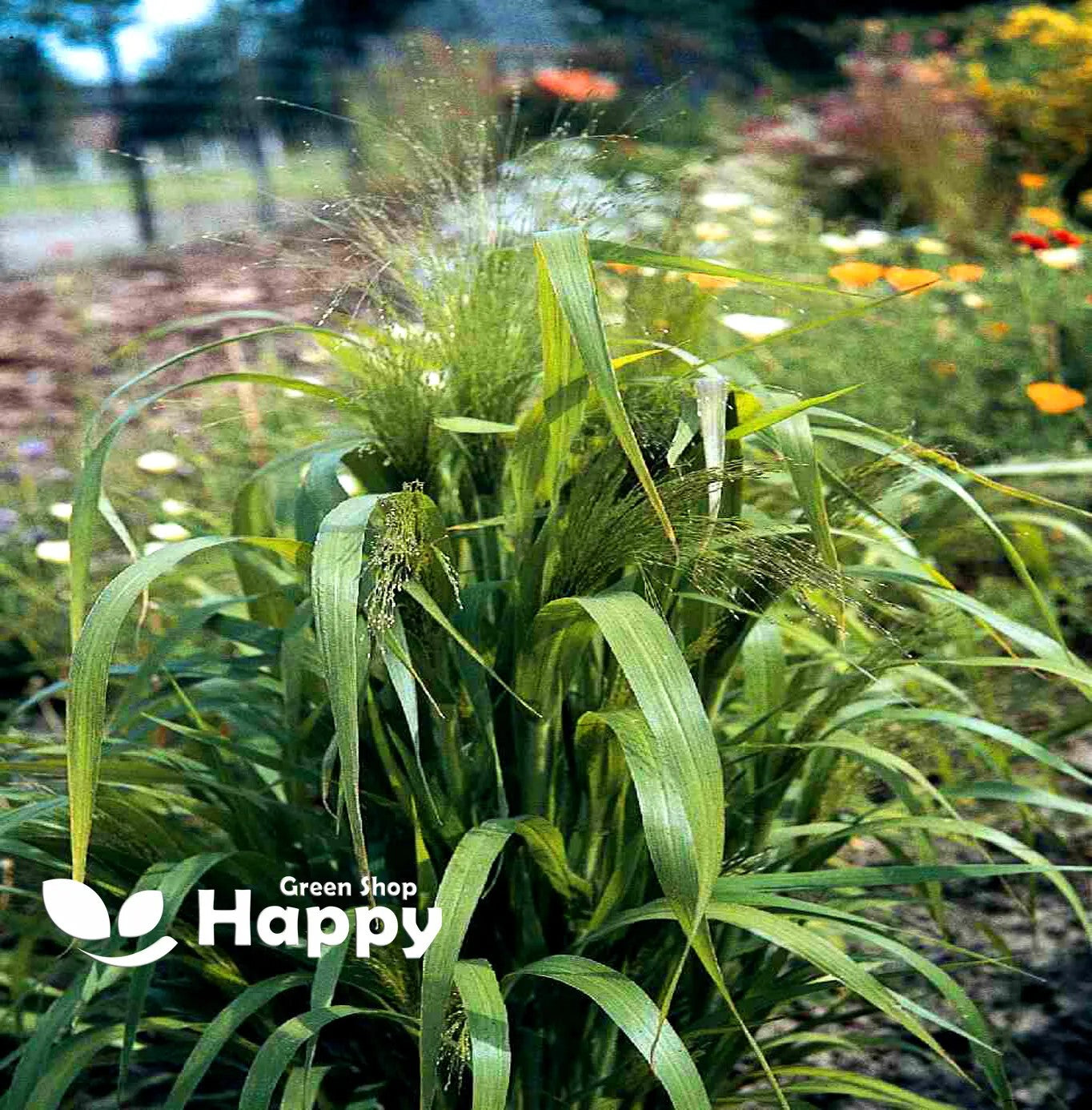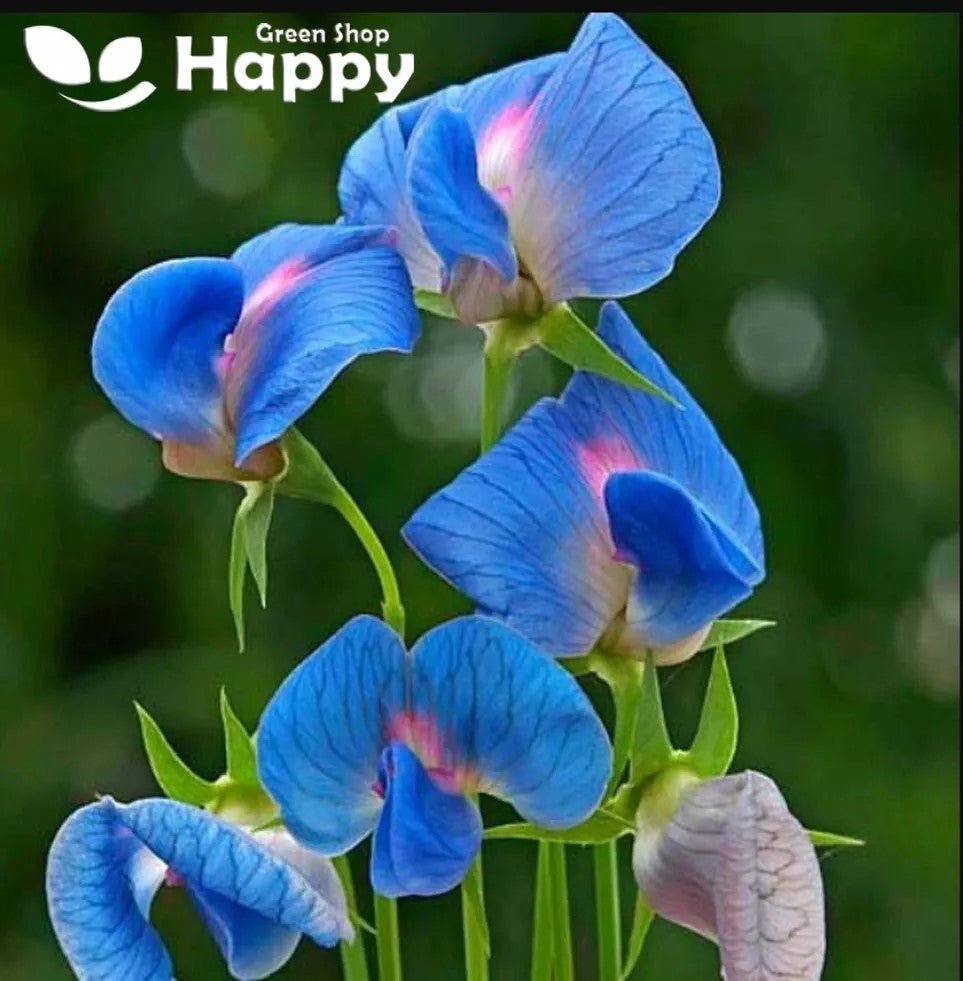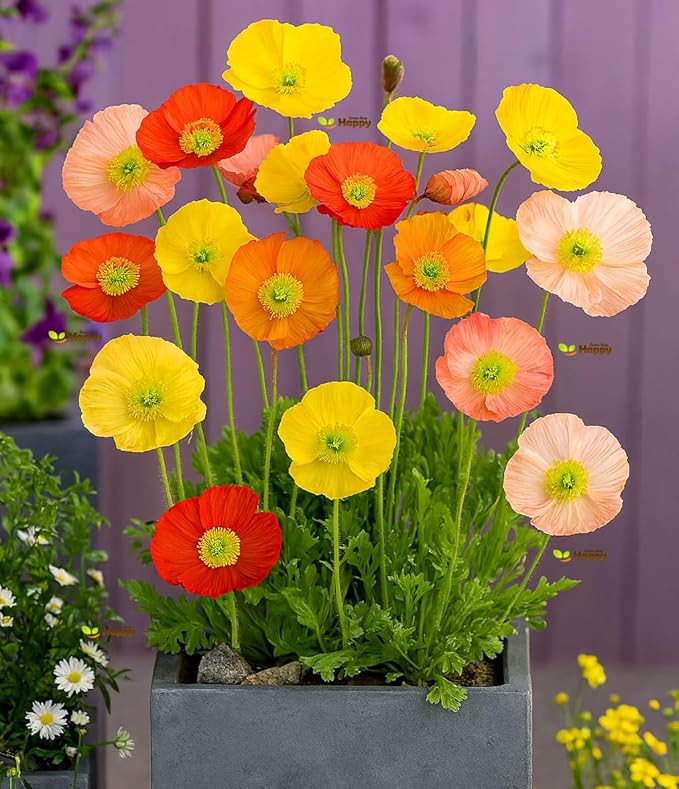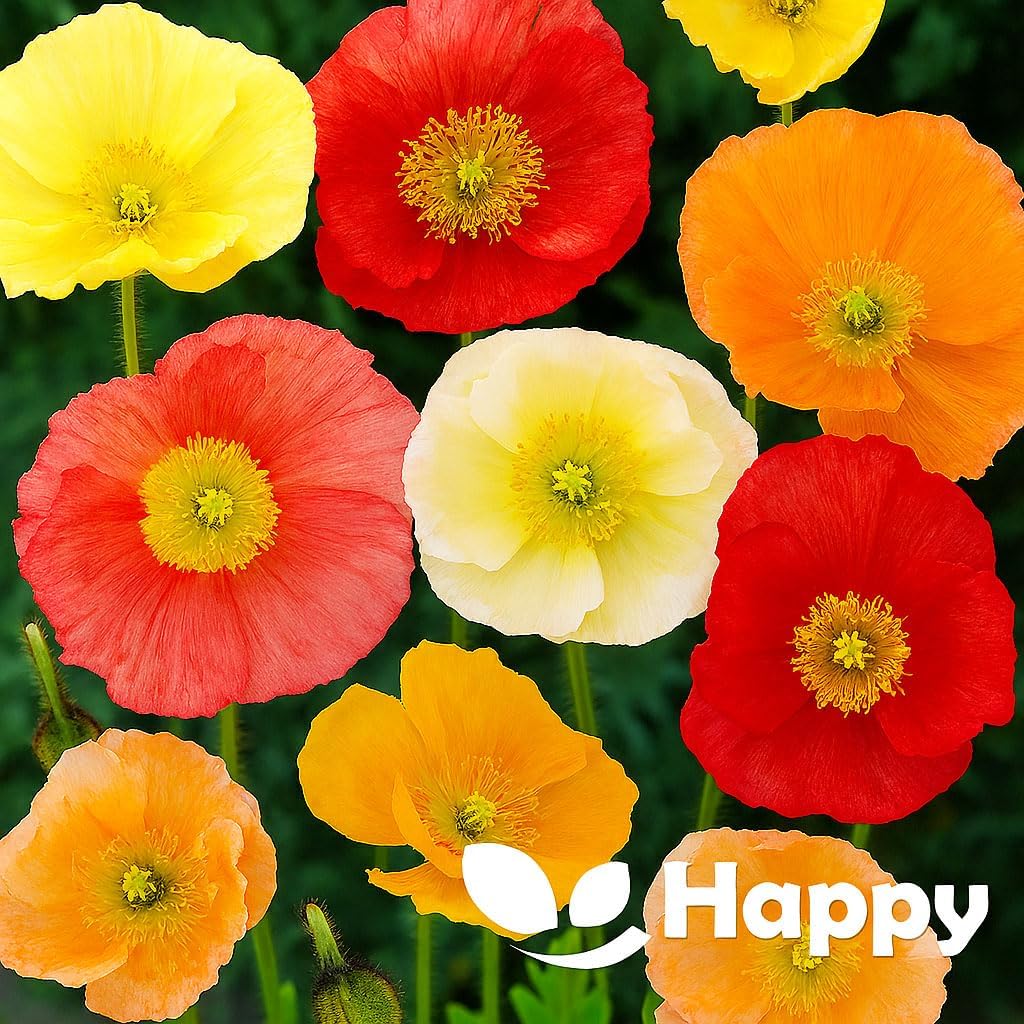Sort by:
121 products
121 products
Lychnis ‘Ragged Robin’ Seeds (Lychnis flos-cuculi)
A charming wildflower perennial, Lychnis ‘Ragged Robin’ produces delicate, deeply cut pink blooms that resemble frilly stars. Hardy and long-flowering, it’s ideal for wildflower meadows, cottage gardens, and pollinator-friendly landscapes, bringing soft color and texture from late spring to early summer.
What Makes It Special
-
Frilly, star-like pink flowers with a whimsical appearance
-
Hardy perennial that thrives in meadows and borders
-
Attracts bees and butterflies, supporting pollinator gardens
Key Features
-
Botanical name: Lychnis flos-cuculi
-
Hardy perennial
-
Height: 40–60 cm (16–24 in)
-
Bloom time: Late spring to early summer
Ideal For
-
Wildflower meadows and naturalistic gardens
-
Cottage-style borders and beds
-
Pollinator-friendly plantings
Sowing
-
Sow indoors Feb–Apr or outdoors Mar–May
-
Cover lightly with soil and keep moist
-
Germination: 14–28 days at 15–20°C
-
Thin seedlings 30 cm apart
-
Flowers the first or second year after sowing
Love-in-a-Mist 'African Bride' – Seeds (Nigella damascena)
Grace your garden with the delicate beauty of Love-in-a-Mist 'African Bride'. This unique variety produces pure white blooms accented by dark, contrasting centers and fine, feathery foliage. Elegant and easy to grow, it’s perfect for borders, cutting, and drying.
Why Grow 'African Bride'
-
Pure white blooms with striking dark centers
-
Long-lasting as cut or dried flowers
-
Easy to grow with airy, fern-like foliage
-
Attracts pollinators
Key Features
-
Type: Hardy annual (Nigella damascena)
-
Height: 45–60 cm
-
Flowering: June–September
-
Position: Full sun
-
Uses: Borders, cut flowers, dried arrangements
Ideal For
-
Cottage gardens and wildflower borders
-
Summer bouquets and wedding flowers
-
Adding soft texture to plantings
-
Wildlife-friendly gardens
Sowing & Growing
-
Sow outdoors: March–May or August–September
-
Direct sow into prepared soil, thin as needed
-
Germination: 10–20 days
-
Space plants 15–20 cm apart
-
Prefers well-drained soil in full sun
Lupine Mix Seeds (Lupinus polyphyllus)
A cottage garden classic, Lupine Mix produces tall spires of pea-like flowers in a rainbow of colors, rising above lush green foliage. Hardy and dramatic, these blooms create striking vertical accents in borders and wildflower plantings, while attracting bees, butterflies, and pollinators.
What Makes It Special
-
Tall spires of vibrant, multicolored flowers
-
Hardy, dramatic, and ideal for vertical interest
-
Attracts bees, butterflies, and pollinators
Key Features
-
Botanical name: Lupinus polyphyllus
-
Hardy perennial
-
Height: 80–120 cm (32–48 in)
-
Bloom time: Early to mid-summer
Ideal For
-
Cottage gardens and mixed perennial borders
-
Wildflower plantings and pollinator gardens
-
Cut flower arrangements
Sowing
-
Sow indoors Mar–Apr or outdoors Apr–Jun
-
Nick seed coat lightly and soak overnight for better germination
-
Cover lightly with soil and keep moist
-
Germination: 14–30 days at 15–20°C
-
Thin seedlings 30–40 cm apart
-
Flowers the second year after sowing
Lunaria ‘Honesty’ Seeds (Lunaria annua)
Honesty (Lunaria annua) is a charming biennial, much loved for both its spring blossoms and its unique decorative seed pods. In early summer, it produces clusters of fragrant purple to violet blooms, which attract bees and butterflies. By late summer, these give way to striking, translucent, coin-like seed pods – often called “silver dollars” – perfect for drying and floral arrangements.
What Makes It Special
-
Dual beauty: colorful spring flowers followed by decorative seed pods
-
Easy to grow, low maintenance, and self-seeding
-
A traditional favorite for dried flower arrangements
-
Attracts pollinators in spring and summer
Key Features
-
Botanical name: Lunaria annua
-
Common names: Honesty, Silver Dollar Plant, Money Plant
-
Height/Spread: 60–90 cm tall, 30–45 cm spread
-
Position: Sun or part shade; moist, well-drained soil
-
Flowering period: April – June
-
Lifespan: Hardy biennial, often self-seeds for naturalized displays
Ideal For
-
Cottage gardens and traditional borders
-
Naturalizing in wildflower-style plantings
-
Pollinator-friendly gardens
-
Dried flower arrangements
Sowing Instructions
-
When to sow: April–June outdoors or late summer for the following year’s flowers.
-
How to sow:
-
Sow thinly in a seedbed, cover lightly with soil.
-
Thin or transplant seedlings to 30–40 cm spacing.
-
-
Care: Very low maintenance. Allow some seed pods to mature for self-seeding and future displays.
Love-in-a-Mist ‘Persian Jewels’ Red – Seeds (Nigella damascena)
Love-in-a-Mist ‘Persian Jewels’ Red (Nigella damascena) is a charming cottage garden annual with finely cut, ferny foliage and delicate star-shaped flowers in rich shades of ruby and crimson. Its ornamental seed pods add long-lasting interest, making it a favorite for both fresh and dried arrangements. Easy to grow and pollinator-friendly, it’s perfect for borders and wildflower-style plantings.
Why Grow "Persian Jewels Red"
-
Striking ruby-red starry blooms
-
Airy, ferny foliage for soft texture
-
Decorative seed pods for dried use
-
Easy to grow and pollinator-friendly
Key Features
-
Type: Hardy annual (Nigella damascena)
-
Height: 45–60 cm
-
Flowering: June–September
-
Position: Full sun
-
Uses: Borders, wildflower gardens, cut and dried flowers
Ideal For
-
Cottage and wildflower gardens
-
Fresh and dried floral arrangements
-
Pollinator-friendly planting
-
Naturalistic borders
Sowing & Growing
-
Sow outdoors: March–May or August–September for earlier blooms
-
Sow direct, thinly into prepared soil
-
Germination: 14–21 days
-
Thin seedlings to 20–25 cm apart
-
Prefers well-drained soil in full sun
Love-in-a-Mist ‘Miss Jekyll’ Indigo Blue – Romantic Cottage Garden Classic
Love-in-a-Mist ‘Miss Jekyll’ produces masses of delicate, sky-like indigo-blue flowers surrounded by fine, ferny foliage. This charming annual blooms over a long summer season, adding soft texture and a whimsical feel to beds, borders, and cut flower arrangements. Decorative seed pods follow the blooms, perfect for drying.
What Makes It Special
-
Iconic cottage garden favourite
-
Rich indigo-blue blooms with airy green bracts
-
Long flowering season and attractive seed pods
-
Easy to grow and self-seeds freely
-
Suitable for fresh and dried arrangements
Key Features
-
Height: 45–60 cm – graceful upright growth
-
Pollinator-friendly – loved by bees
-
Ornamental seed heads extend garden interest
-
Tolerant of poor soil and low maintenance
-
Hardy annual
Ideal For
-
Cottage and wildflower gardens
-
Cutting gardens and dried flower crafts
-
Borders and mixed plantings
-
Naturalising for effortless summer color
Sowing
-
Direct sow in spring or autumn where they are to flower
-
Sow thinly, cover lightly with fine soil
-
Germination: 10–14 days at 15–20°C
-
Thin seedlings to 20 cm apart
-
Prefers full sun and well-drained soil
Love Grass – Ornamental Grass Seeds
(Eragrostis elegans)
The Love Grass (Eragrostis elegans) is a graceful, airy ornamental grass valued for its fine, delicate seed heads that shimmer in the breeze. Its soft, cloud-like sprays add a romantic, light texture to borders, wildflower gardens, and floral arrangements. Easy to grow and quick to establish, this annual grass also makes a beautiful addition to bouquets and dried flower crafts.
Key Features
-
Type: Annual ornamental grass
-
Height: 50–70 cm
-
Spread: 25–30 cm
-
Flowering/seed heads: July–October
-
Position: Full sun
-
Soil: Light, well-drained
Ideal For
-
Adding texture to borders and beds
-
Wildflower-style plantings
-
Cut flower arrangements (fresh or dried)
-
Naturalistic and prairie-style gardens
Sowing & Growing
-
Sow indoors: March–April (in trays or pots, lightly covered)
-
Sow outdoors: April–May (direct in prepared soil)
-
Sow depth: Lightly cover – fine seeds need minimal soil cover
-
Spacing: Thin to 20–25 cm apart
-
Care: Low-maintenance; thrives in poor soil and tolerates drought once established
Indian Pea ‘Azureus’ – Blue-Pink Flowers – Seeds (Lathyrus sativus)
The Indian Pea ‘Azureus’ (Lathyrus sativus) is a striking and unusual climbing annual, producing delicate blue to pink pea-like blossoms above fine green foliage. Fast-growing and drought-tolerant, it thrives in poor soils and adds a natural, airy charm to borders, trellises, and wild gardens. A hardy species, it has long been valued for its ornamental and agricultural qualities.
Why Grow Indian Pea ‘Azureus’?
-
Unusual pea-like flowers in blue and pink shades
-
Climbing habit perfect for trellises and supports
-
Hardy, drought-tolerant, and easy to grow
-
Adds a natural wildflower look to gardens
Key Features
-
Type: Hardy annual
-
Height: 100–150 cm
-
Spread: 30–40 cm
-
Flowering: June–August
-
Position: Full sun
-
Soil: Poor to moderately fertile, well-drained
Ideal For
-
Trellises, arches, and fences
-
Cottage and wild gardens
-
Pollinator-friendly plantings
-
Drought-prone or low-maintenance sites
Sowing & Growing
-
Sow outdoors: March–May directly in soil
-
Germination: 10–20 days at 15–20°C
-
Thin seedlings: 20–30 cm apart
-
Provide support for climbing stems
-
Water regularly in dry spells
Tip: Pair with other climbing annuals for a colorful vertical display.
Iceland Poppy ‘F2 Wind Song’ Mix Seeds (Papaver nudicaule)
A delicate and charming mix, Iceland Poppy ‘F2 Wind Song’ produces vibrant, papery blooms in shades of pink, orange, yellow, and white. Hardy and long-flowering, these poppies are perfect for borders, rock gardens, and wildflower-style plantings, bringing cheerful color from late spring into summer.
What Makes It Special
-
Soft, papery flowers in a mix of pastel and bright shades
-
Hardy, compact plants that thrive in cooler climates
-
Attracts bees and pollinators, enhancing wildlife-friendly gardens
Key Features
-
Botanical name: Papaver nudicaule
-
Hardy perennial (often grown as an annual)
-
Height: 30–45 cm (12–18 in)
-
Bloom time: Late spring to early summer
Ideal For
-
Borders, beds, and rock gardens
-
Wildflower and cottage-style plantings
-
Containers and pots for bright seasonal color
Sowing
-
Sow indoors Feb–Apr or outdoors Mar–May
-
Scatter seeds on the surface of well-drained soil; do not cover
-
Germination: 14–28 days at 15–20°C
-
Thin seedlings to 20–30 cm apart
-
Flowers the same year when sown in spring
Showing 54/121



